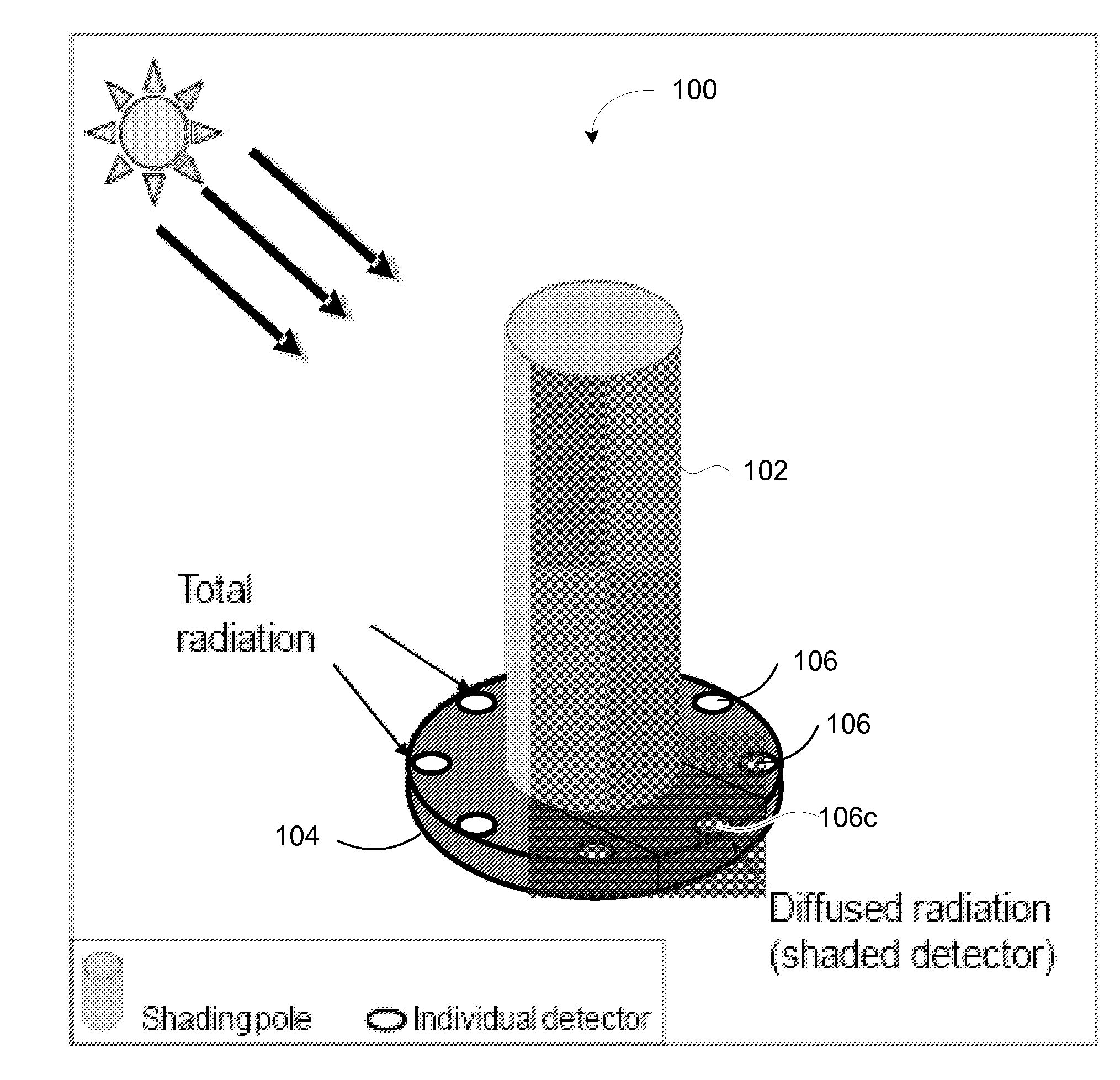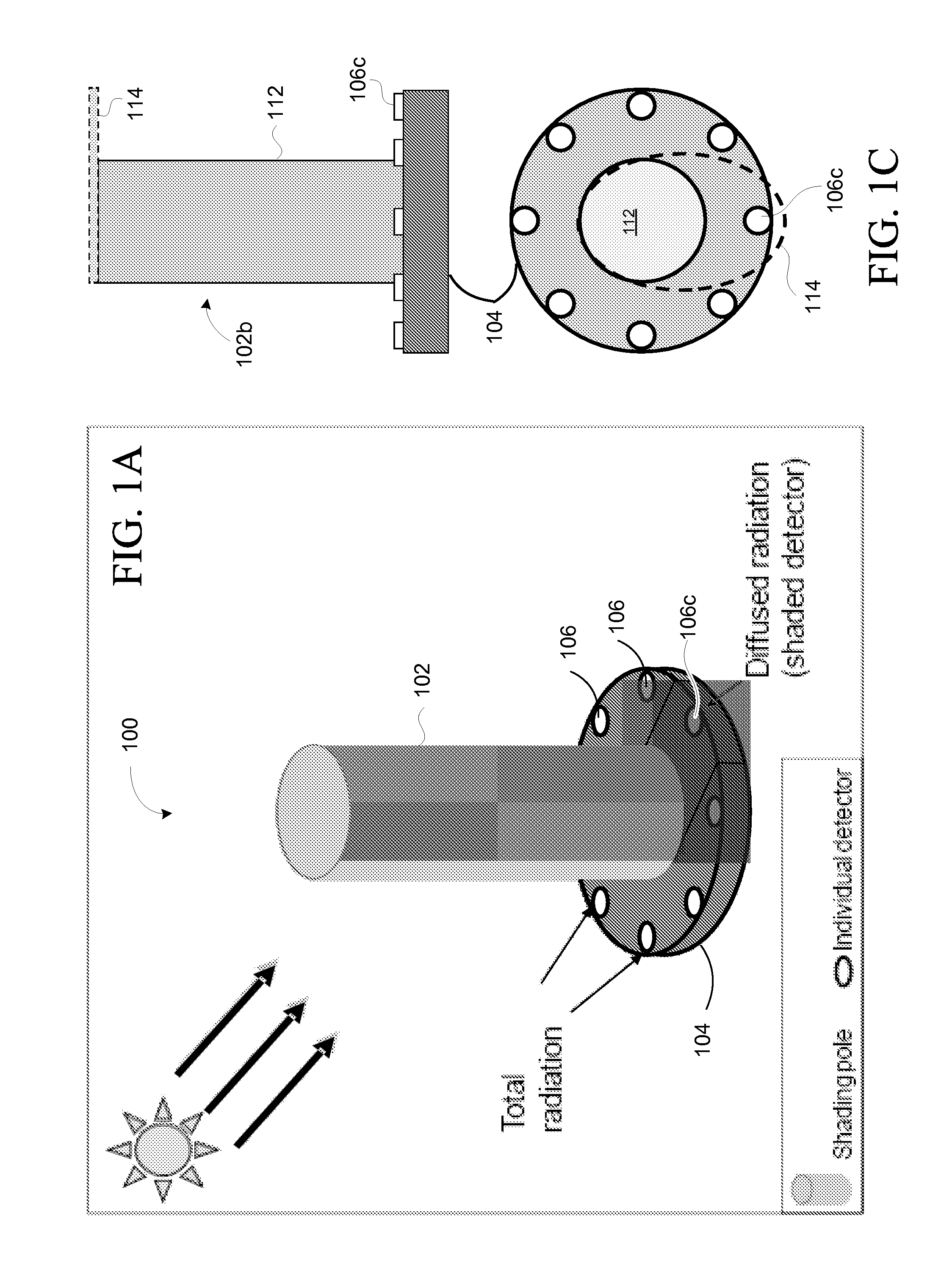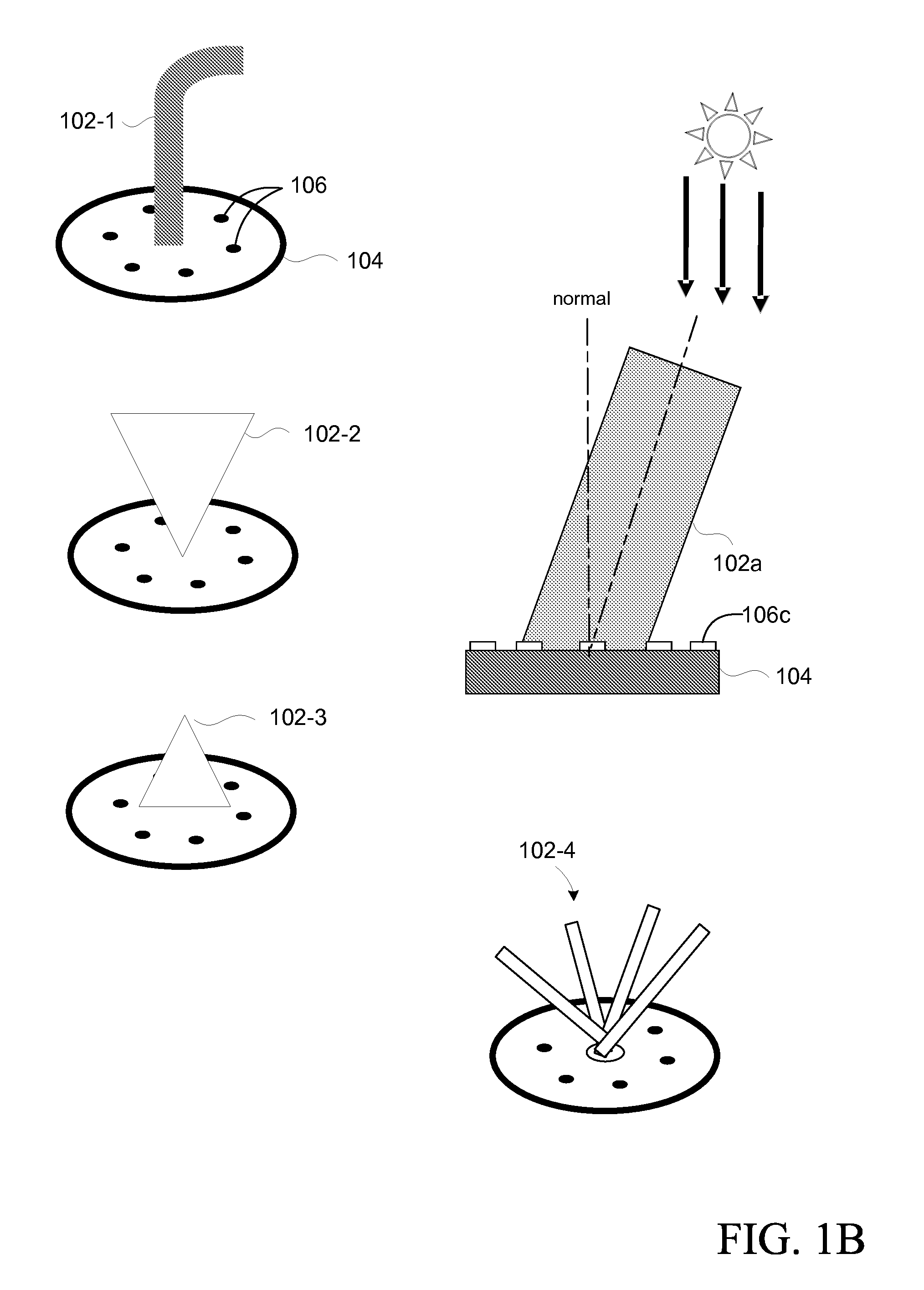Direct, Diffuse, and Total Radiation Sensor
a total radiation and sensor technology, applied in the field of solar radiation measurement methods, can solve the problems of high maintenance cost, easy human error in the configuration of the shadow band sensor, and difficult to measure the diffuse radiation component alone, and achieve the effect of low cost and low maintenance cos
- Summary
- Abstract
- Description
- Claims
- Application Information
AI Technical Summary
Benefits of technology
Problems solved by technology
Method used
Image
Examples
Embodiment Construction
An embodiment of a solar detector 100 of the present invention, shown in FIG. 1A, comprises a shading structure 102 attached to a supporting base 104 to provide structure for supporting the shading structure and for supporting detectors 106. A plurality of detectors 106 may be disposed on an upper surface of the base 104, or otherwise supported by the base. This figure illustrates the general structure of embodiments of a solar detector in accordance with the present invention.
As can be seen in FIG. 1A, detectors 106a, 106b are completely exposed to total solar radiation, while detector 106c is completely shaded by the shading structure 102. As the sun moves, of course, so will the shadow that is cast by the shading structure 102. Consequently, detectors that were previously completely exposed to total solar radiation will become completely shaded, and previously completely shaded detectors will become completely exposed to total radiation. Of course, there will also be some detecto...
PUM
 Login to View More
Login to View More Abstract
Description
Claims
Application Information
 Login to View More
Login to View More - R&D
- Intellectual Property
- Life Sciences
- Materials
- Tech Scout
- Unparalleled Data Quality
- Higher Quality Content
- 60% Fewer Hallucinations
Browse by: Latest US Patents, China's latest patents, Technical Efficacy Thesaurus, Application Domain, Technology Topic, Popular Technical Reports.
© 2025 PatSnap. All rights reserved.Legal|Privacy policy|Modern Slavery Act Transparency Statement|Sitemap|About US| Contact US: help@patsnap.com



